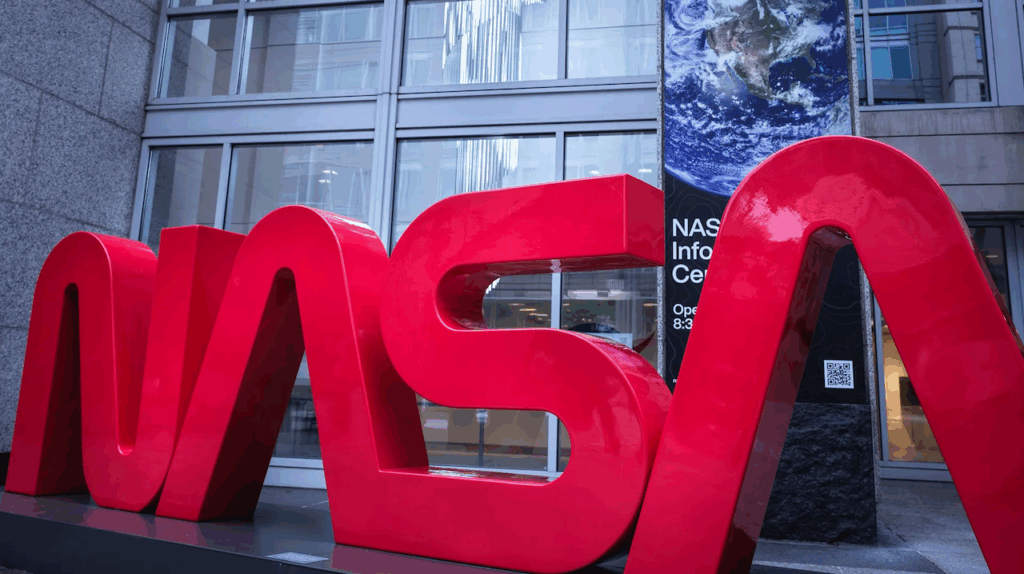NASA OIG SLS Audit: Poor Management By Boeing – Send More Money

OIG Audit: NASA’s Management of the Space Launch System Stages Contract, OIG
“At its current rate, we project Boeing will expend at least $8.9 billion through 2021–double the amount initially planned–while delivery of the first Core Stage has slipped 2 1/2 years from June 2017 to December 2019 and may slip further. Between June 2014 and August 2018, Boeing spent over $600 million more than planned on developing Core Stages 1 and 2, and NASA officials have confirmed that in FY 2018 alone Boeing expended $226 million more than planned. Cost increases and schedule delays of Core Stage development can be traced largely to management, technical, and infrastructure issues driven by Boeing’s poor performance. For example, Boeing officials have consistently underestimated the scope of the work to be performed and thus the size and skills of the workforce required. In addition, development of command and control hardware and software necessary for Core Stage testing is 2 years behind schedule, while equipment-related mishaps and an extreme weather event contributed to cost and schedule delays. Individually, each of these issues may have caused only minor cost and schedule problems, but taken as a whole they have resulted in a 2 1/2-year slip to the SLS Core Stage delivery schedule and approximately $4 billion in cost increases for development of the first two Core Stages. Furthermore, Boeing’s cost and schedule challenges are likely to worsen given that the SLS has yet to undergo its “Green Run Test”–a major milestone that integrates and tests the Core Stage components.
Based on Boeing’s current expenditure rate, NASA will need to increase the contract value by approximately $800 million to complete the first Core Stage for delivery to the Kennedy Space Center in December 2019. If the EM-1 launch takes place in June 2020, more than $400 million–for a total of $1.2 billion–would need to be added to the contract. This amount would only ensure delivery of Core Stage 1 and would not include the billions more required to complete work on Core Stage 2 and the EUS. Consequently, in light of the Project’s development delays, we have concluded NASA will be unable to meet its EM-1 launch window currently scheduled between December 2019 and June 2020.
We found that several poor contract management practices by NASA contributed to the SLS Program’s cost and schedule overruns. …”









I bet you won’t see this in all those new rah rah Boeing commercials.
Shocking, just shocking ?. No wonder they need to do a smear campaign against the FH and BFR…
This program is nothing but a white collar jobs program. Spacex & Blue Origin will be manned space flight drivers for this country. NASA can’t get out of its own way and is stuck looking to the past accomplishments of 30-50 years ago. Really sad what they have become.
It’s not NASA’s fault, Senate Republicans wanted to keep the shuttle program pork going. SLS exists entirely for this reason. Of course designing a rocket around the need to keep jobs, and then coming up with the engineering afterwards isn’t exactly the best way to build a rocket. NASA had it forced upon them by Republicans in the Senate. Is also why Congress was so slowly to fully fund commercial crew, because there is no pork to spread around when it comes to Space X. They build everything in one state & not even a Republican one! :< So sad for pork Congress people.
Billions and billions of dollars spent on this monstrosity. Ugh.
It’s well known that people suck at estimating how much time/money/resources big projects are going to take. Asking people to plan multiple years ahead is asking to be told a fairy tale.
This may be an unsolvable problem, unless we can radically change how we structure these projects, e.g. by breaking them into smaller iterations, which may not even be possible if a project has too many dependency chains, or requires classified information that only a few people are allowed to know, etc.
If your ability to make a profit depends on accurate planning and forecasting, you’d surprised at how good private industry is at those tasks. Structure the project as cost-plus with the implicit understanding that the vendor will not lose money under any scenario, and you have SLS in a nut shell.
That’s an interesting question. You could get around the dependencies by assuming some projects will fail or become irrelevant. That is, simultaneously funding several smaller efforts to do the same thing, knowing you’ll ultimately need one of them to work. That doesn’t hold the later effort hostage to a particular one of the initial projects working. Crash programs like Apollo took that approach, and it’s generally considered effective but inefficient. But you’re right about huge mega-projects being hard to manage and keep on track and on budget. That’s inevitably inefficient. The interesting question is which approach would be less inefficient.
I suspect the former approach would be more efficient with many flights (eg, try a little/fly a little, move fast and break things… whatever your favourite slogan is), while the latter approach would be more efficient with few flights.
Who knew White Elephants were expected to fly ?
No, if the SLS program is about pork, that would be a flying pig. There is some conventional wisdom about when pigs fly.
Incredibly disappointing to say the least but as one of the few SLS fans on this site I see at least one silver lining.
Quote from OIG report:
“Cost increases and schedule delays of Core Stage development can be traced largely to management, technical, and infrastructure issues driven by Boeing’s poor performance.”
I have long believed that a change in management practices from NASA and Boeing would go a long way to curbing the delays and cost overruns the SLS program has been experiencing. In other words building the rocket itself isn’t really the main problem, its how the program is being run. This report seems to confirm my beliefs.
What is needed here is a firm hand at the tiller. It remains to be seen if Bridenstine et. al are able to change the management culture of the program. If better management is not forthcoming the SLS program is in serious danger of cancellation.
One of the things that should happen as a result of this report is a reassignment of the EUS to another company (like BO) as a consequence of Boeing’s poor performance.
But more money spent and having an inefficient management structure equals more jobs, the key performance measure for the pork masters pushing it 🙂
Some of the cost is directly tied to the management practices the OIG report describes. But some of it is inherent to the basic design of SLS. Nothing is going to make expending four RS-25 RL-10 engines per launch cheap. But those choices are also tied to management decisions (and not necessarily at Boeing or NASA; I’d say Congress and the President amount to the top level of senior management.) I’m not sure if it would be legal to shift the EUS contract to Blue Origin. The OIG report talks about the contract for the SLS core, not the contract for EUS, and there are regulations over how the government can decide to recompete contracts. But if Blue Origin were given the job, I suspect the would drop the current design and replace four RL-10s with one BE-3. I think that would be a sound management decision to reduce costs.
Any switch like that to BO for EUS comes with another schedule slip attached. BFR is coming up and can maybe replace SLS in size and throw weight. If it flies before SLS (I still doubt that it will), then the pig might never fly at all.
Until FAR is tossed out this will always go on. FAR was 70 years in the making .. and congress has it designed exactly how they want it to maximize the pork to their states and districts..
fixed priced, milestone based, pay for each milestone yourself until approved…
I believe those regulations were passed to prevent war profiteering. That’s not such a bad thing. They have gotten completely out of control, but I’m more inclined to fix it than toss it.
If you look at the history it actually is a bad thing. During WW II several aircraft were developed under fixed price contracts and they came in faster than expected meeting specs. Audits showed that the companies were making bigger margins by controlling costs and designing to original specs. As soon as Congress got their collective noses out of joint and went to cost plus, costs soared and delays and scope creep became the normal operating procedure. The percent profit went down to around seven percent and the costs to taxpayers grew like crazy. The companies actually made more money because seven percent on a hundred million is a lot more than ten percent on thirty million. The financial incentives promote delays and overruns and scope creep.
Who do they get to manage these projects? “..Agency officials deemed Boeing’s performance ‘excellent’ in three and ‘very good’ in three other periods…”?!?!?!?
WTF?!?! Stuff like this gives all of us a bad stink. Heads should have been rolling quick fast riki tick!
Ya and now NASA is blaming Boeing management for the bad OIG audit. Interesting swap after rating Boeing’s performance “Excellent”.
Again, paid not to fly.
Upcoming Breaking News: Senator Shelby calls for review of NASA OIG.
I spread the word earlier this week that June 2020 was the new launch date, but reading this tells me that the 2021 speculation makes more sense.
At least the program reviewer has a nice retirement plan in Boeing’s gulf department. 😉
The OIG report suggested switching to fixed-price structure but I doubt Boeing will go for that. They’re doing fine getting paid not to fly…and at this rate they might even succeed!
No one expects BFR to launch on time, but even late it might yet go into service soon enough to strangle this fat bird in the nest.
almost a million dollars per work day siphoned off by Boeing …
Can anyone here offer a dispassionate explanation for the time slip and escalation in costs? One without ‘pork’ in any sentence?
Why? I’ve lived long enough to know life is complex. And with something like this, with hundreds of reviewers, there’s some sort of rationality someplace.
But where?
I can’t say anything specific about SLS, but in general, we’re talking about an environment where risk and optimal performance are higher priorities than cost and schedule. When someone points out a potential risk or a potential improvement, there is a cultural tendency to look into it, not to say, “good idea, but it would cost too much and things are good enough as is.” That’s obviously not a black and white thing. But I think it’s a reason why things slip in the direction of higher cost and later delivery dates.
Also, massively complex supply chains of hundreds of subcontractors, which were largely dictated by political considerations.
By contrast, SpaceX’s supply chains are a lot simpler, and more vertical.
I guess I thought that I would hear something about “the culture”?
I have defended public employees, and will continue to do so.
But: I listen to a lot of audio books. And I mention this because often the audiobook software has a setting that will alter the playback speed (without altering the pitch). Frequently that’s what I think of when I come into contact with the public sector; it’s like playback is at 70%.
Not everyone. But many.
There’s also the way in which extra effort is rewarded, or not. Nobody hands out stock to NASA employees.
On the other hand I also see real zealots. I represented a developer who wanted to build multi-family homes adjacent to a wildlife corridor. The corridor was narrow to begin with- imagine a panther and a rabbit using the same 500′ wide space. The project was rejected by a very smug PhD. And in that case I appreciated the authority she wielded.
Other times, though, reviewers will make a call that’s clearly wrong and everyone at the table knows it. But everyone also knows that resistance is futile, unless the prospect of long delays and large attorney fees is in the business plan.
It’s a different world.
(All of the above is extrapolation from my 30 years+ interacting with agencies at local, state and federal level on land use or environmental issues).
In the case of SLS I wondered if there is something that materially separates this particular program from other booster technology? Is part of SLS obviously more complex than a corresponding part or function in F9, for instance? It’s true that living authority is different, but not exponentially different. So- what is the difference?
I can’t even define an arena in which the differences can be examined. Why will SLS finally cost many, many billions? Should I dig into the tech? Into management? Into shifting program?
I’m asking because it’s a struggle trying to explain my own exasperation to people who know even less about rockets/NASA than I do.
In short: what’s the elevator speech explaining this system and associated costs?
SLS continues on its never ending mission to deliver vitally needed pork to critical congressional districts. A TOTAL success.
The SLS is not much more than a collection of old parts at enormous expense. As a none-reusable rocket it will be beastly expensive to use. After the BFR and New Glenn rockets come on line the insanity of this program will become sharply apparent and the SLS will be canceled.
What an utter waste of the tax payer’s money.